September 2025
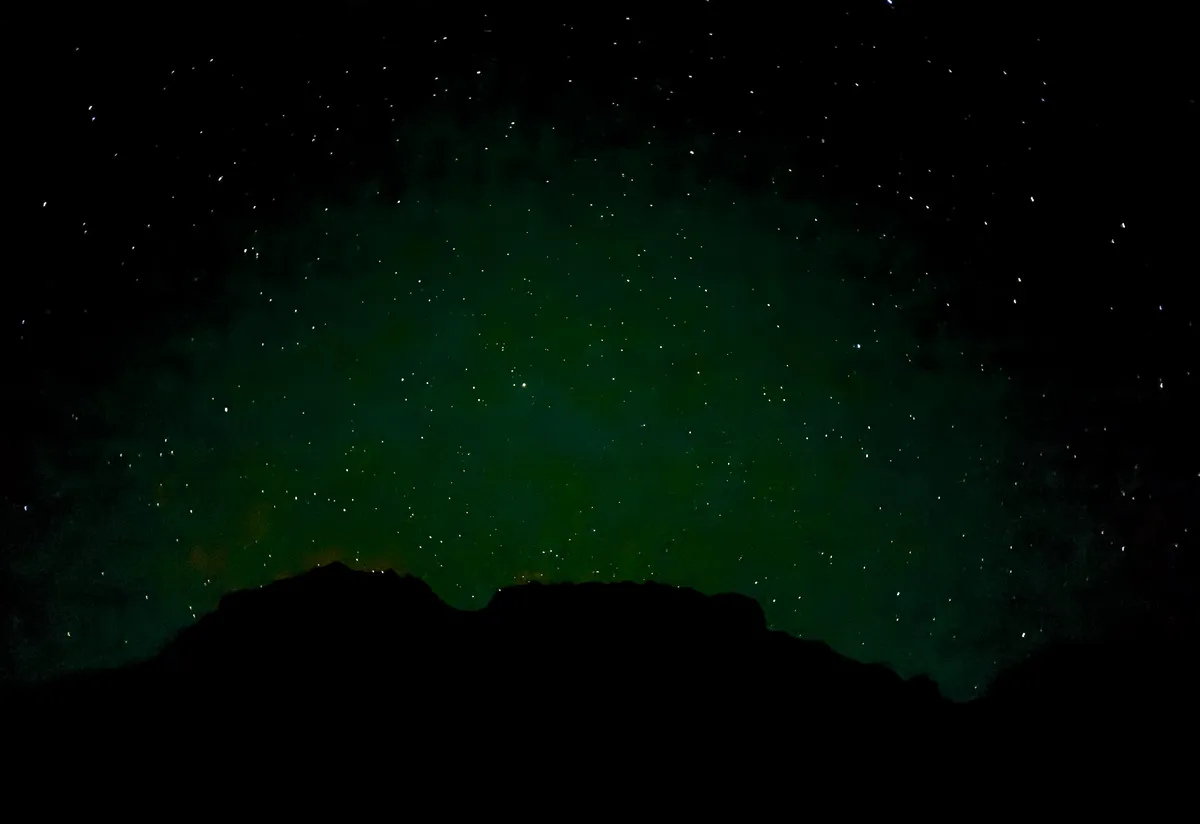
My update for the month
(First a preamble.)
(And most of the photos in this post are credit to Bell!)
This format of monthly updates, it's triggering a lot of black-and-white thinking on my part. Like, "it's a monthly update so every day in the month needs to be documented here." I also get this flavour of thinking when I try to write a journal entry for the day. The difference being that with a day, after twenty minutes or so I generally run out of steam and can see that I've done it justice. But a month is so much bigger. Here is the thing: I have a nagging fear that part of my self-imposed standards around needing to try and capture everything is that I'm using that as a way to judge a piece of writing good enough. I notice this in all types of my writing, feeling unsure about what makes it done or successful, and subconsciously (or I guess semi-consciously because I'm writing this) trying to overcompensate with comprehensiveness. Somehow comprehensiveness feels more objective and easier than the subjective discernment to pluck bits and pieces out of the river of things that happen in a day or month, and back them, saying: this is what I have chosen to focus on, at the exclusion of so much else. So I benefited from Herman's Observations on 6 years of journalling — for example, how he started just writing down 2-3 sentences per day. Constraints can be liberating.
So. What was meaningful about September was that Bell and I started our bicycle trip!
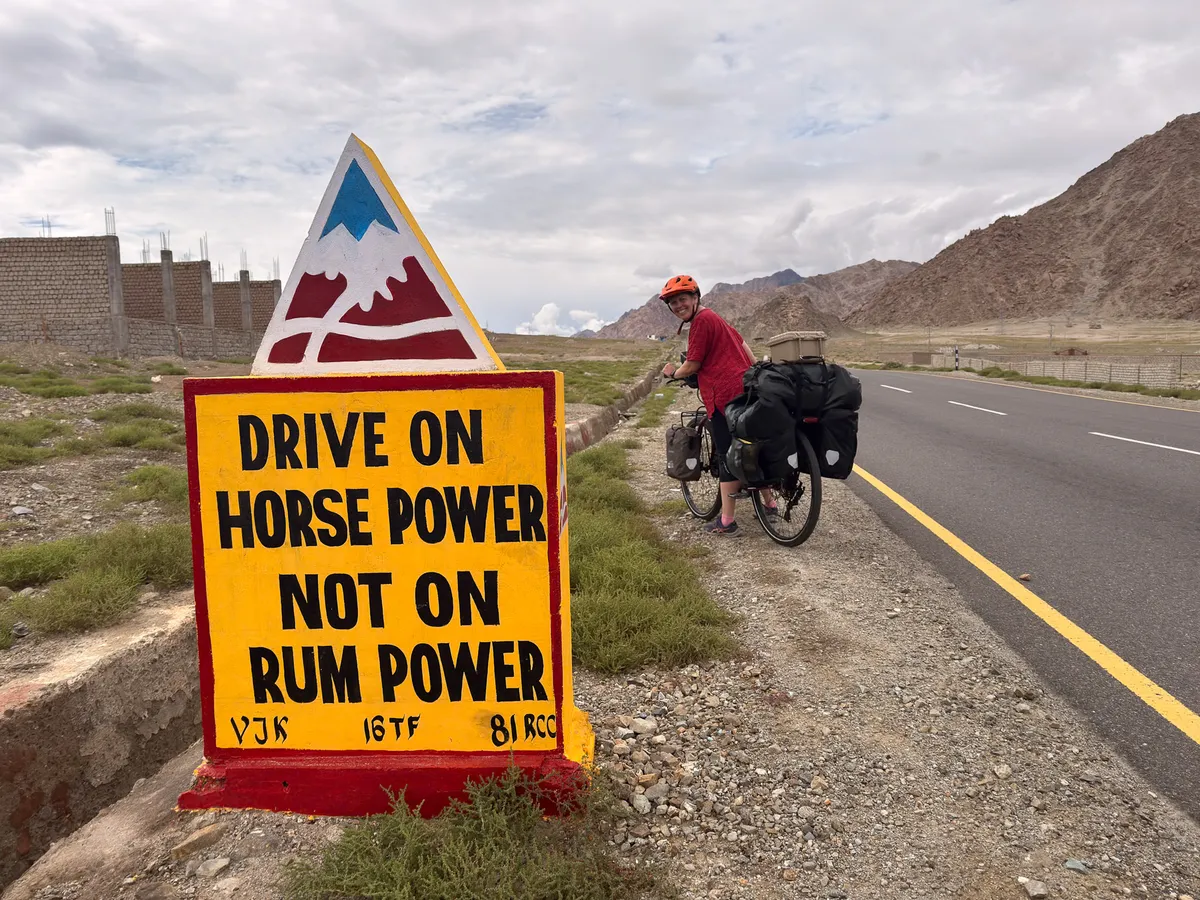
Warm-up trip to Zanskar Valley
I am trying to carry more weight, the idea being to have my bicycle and Bell's bicycle weigh a similar amount. This is a big change from the past, when my bike was much lighter, something that felt normal or inevitable at the time but now seems just wrong.
In last month's update I wrote about how I was anxious about the weight of my bike. When we left Leh for a warm-up trip, my bike was wobbling and to even start riding took a few tries. I felt anything like an "experienced bike traveller." I felt silly. We descended from Leh to the valley floor and met the highway that would take us towards Zanskar, and I pulled off along the barbed wire fence separating us from the Indian Army, and I cried. "I don't think I can do this" I said to Bell. What would we do if my back rack cracked under the weight? And then I felt guilty, because I wanted to be able to hold space for Bell, who was navigating scary health issues that made the final departure from Leh, after this warm-up trip, feel very uncertain.
I was going to say that surprisingly we made it to our destination, the village of Chilling (yes), the first village up the Zanskar Valley. But is it surprising just because there were obstacles like sunburnt skin, fear for the bike rack, and the challenge presented by even the smallest climb? Challenges that feel daunting in the moment can so often be overcome that it feels insufficient to say it was surprising that we made simply because there were obstacles. We were on our way. Slow progress is progress.
Zanskar Valley was incredibly scenic. Like the mountains had been recently ripped apart just enough for the river and the road to fit. Red rock, grey rock, rough, falling apart, craggy heights looming over us so much so that sometimes it felt dangerous to even stop and take a picture.
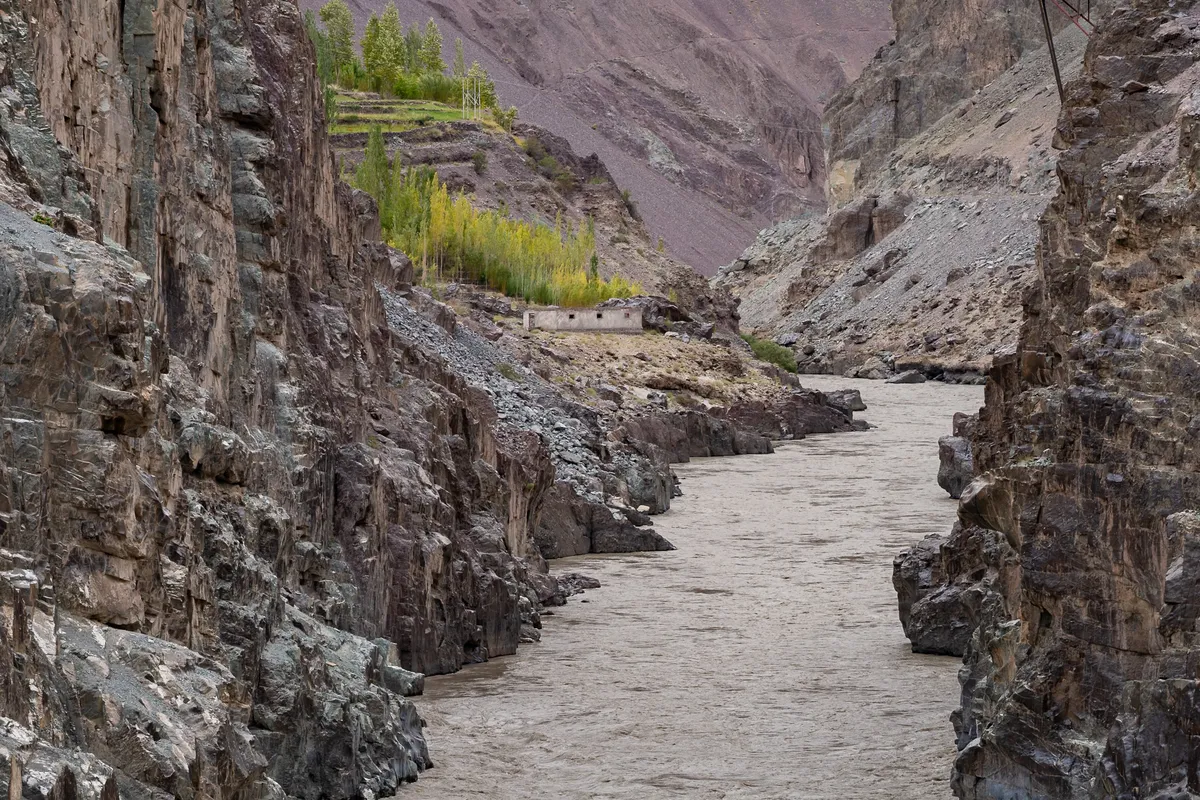
I was learning new things, like how to ride with back panniers on the front. This was much better for weight distribution between the racks. Learning what animals we might see here (small snakes and lizards; something like a partridge; something like an antelope). We were relearning old things, like the experience of lingering. Like with an old lady who was all alone by the road across from a rafting put-in point, selling cold drinks from a bucket of murky Zanskar River water, who offered us tea and gave us apples from Chilling.
There was the relearning of how to muddle through, hoping for grace, when making the inevitable missteps or getting lost in translation. I made an interaction too transactional after a man in Chilling said that we were welcome to camp in the field -- I ran after him with money in my hand, where the done thing would have been to have waited until the next morning. A bike trip in somewhere exotic (exotic to the person on the bike trip) is 62% just about acclimatizing to a state of confusion and mystery.
I'm a bit surprised to report that the obvious adjustment we had to make — going from pretty sedentary remote worker lives to spending most of the day outside riding — was a smooth and easy transition. Weird.
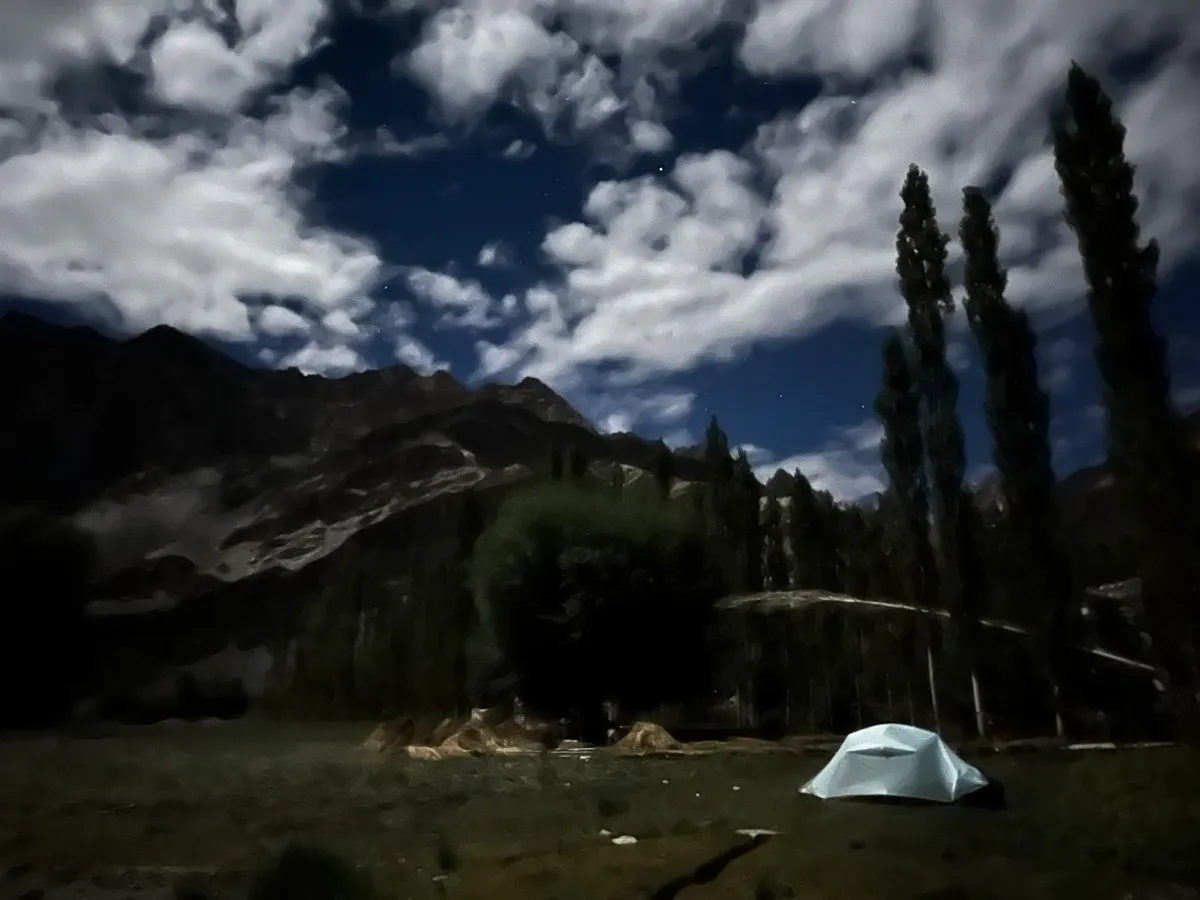
The warm-up trip was 100 km, split into 4 days. On the return leg we stayed at Nilza Guesthouse in Nimoo, referred to as a village although it felt more like a town to me, with lots of activity and buildings and a general store that even had herbal tea. (This is for Bell, not for me, I carry on with the caffeine vice.) In Nilza we had stumbled into an oasis. Stanzin and his family and team showed us such care. One rest day turned to two. Stanzin took us to see his grandparents so that we could have tea and fruit inside their incredible Ladakhi house. Then Bell's neck injury got very bad. Once we told Stanzin that we'd be taking transport back to Leh, he insisted on driving us and all our gear himself. But not just that, he took us straight to the hospital where his sister (the eponymous Nilza) is a doctor. He walked us through the maze of departments and accompanied Bell into the room with the specialist, looking over at me in the waiting room and communicating his thoughts and feelings as the appointment progressed. Then Stanzin drove us around Leh until we found a guesthouse that was suitable to him. He was looking for one with a garden because it would indicate that a family also lived there, making such a guesthouse have a more homely feel.
Back at Leh, I now had a pannier set-up that quieted my anxieties about my back rack breaking. And a few days later we bought a Primus multi-fuel camping stove to replace the one that we'd been forbidden to fly with at the check-in counter.
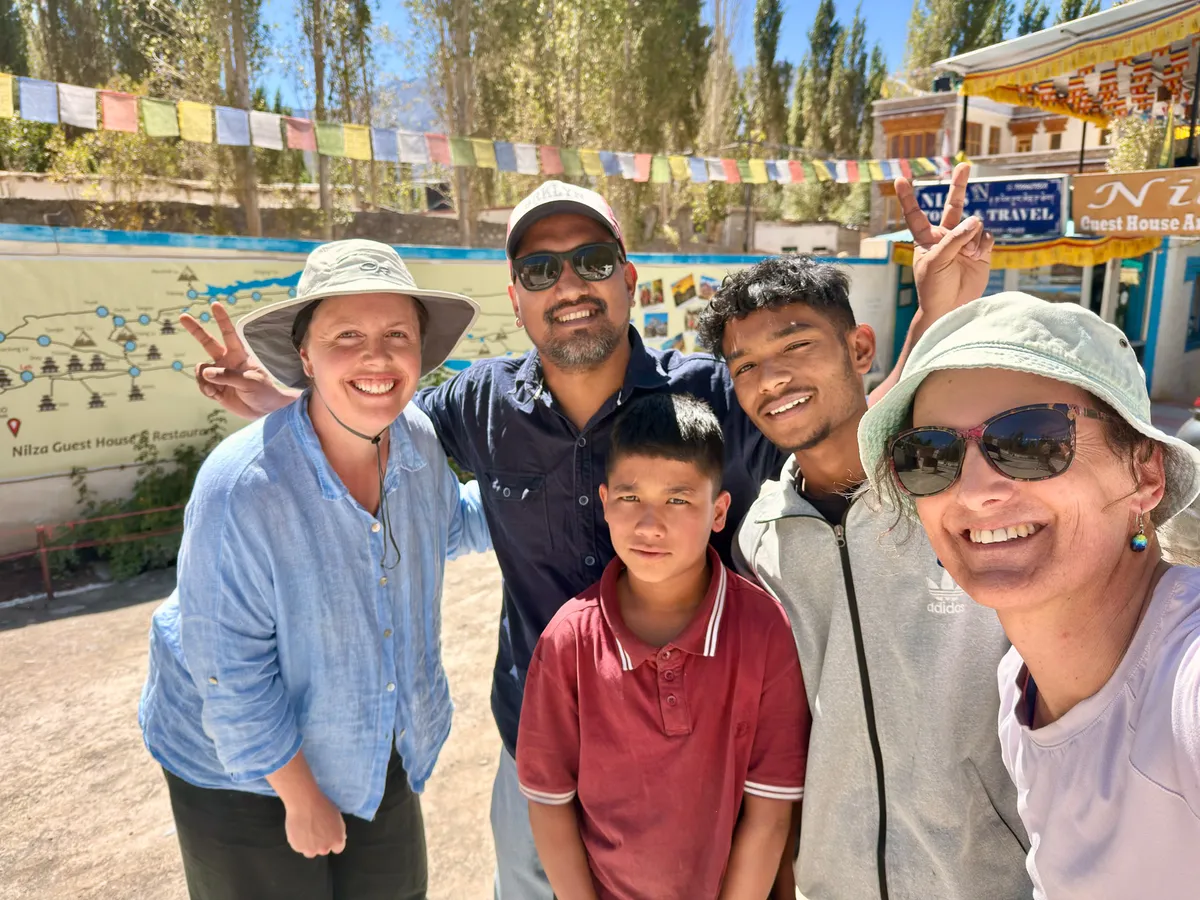
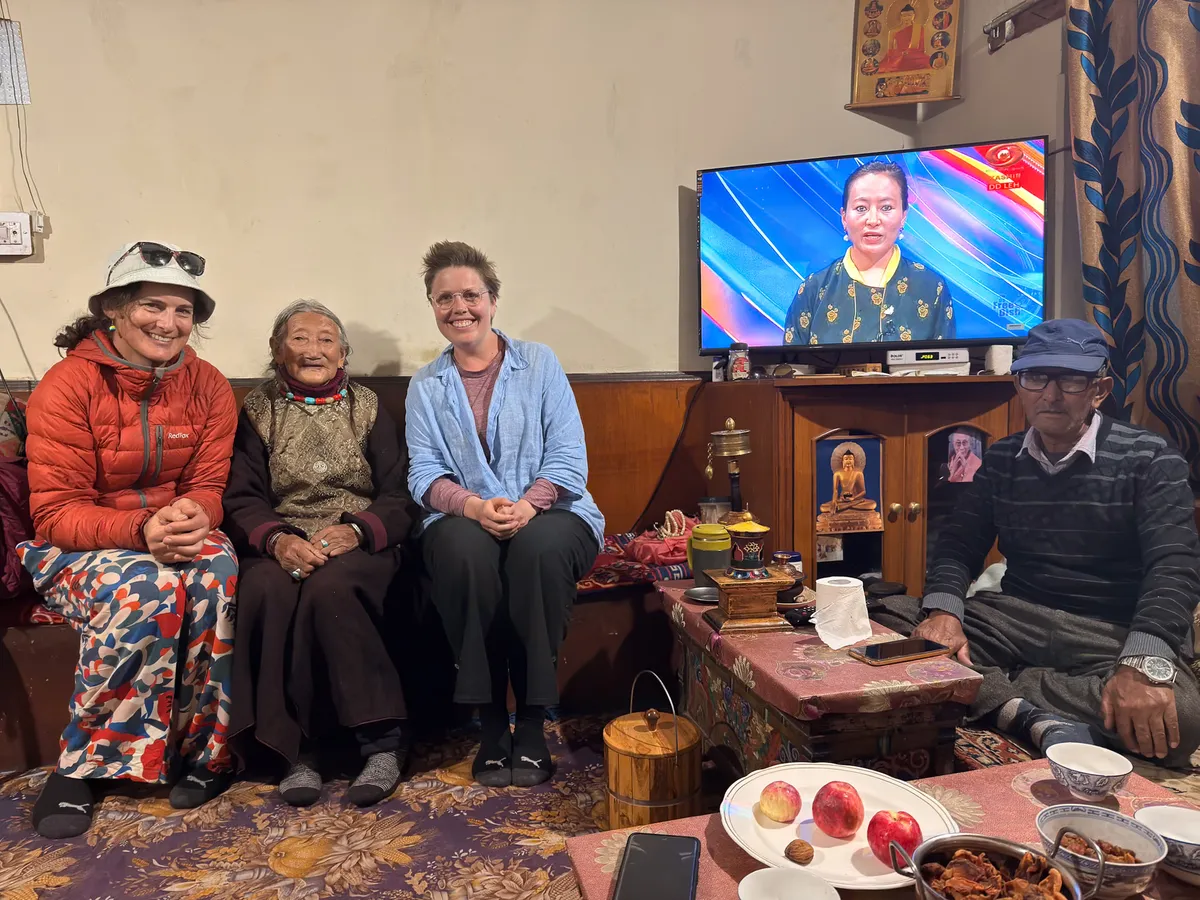
Heading out on the Leh-Manali Highway
The start to this trip loomed large for us and perhaps haven't explained why. We were heading out for a few hundred kilometres of cycling at 4,000 m.a.s.l and above, in an area that I'm reluctant to call "remote" because we would be following a national highway. But there would be few people and the places we'd visit would be villages or just seasonal outposts. To make things trickier, camping seemed to be not an option because of Bell's neck (and to be fair, I am very out of practice with camping and would be quite conservative about approving a spot). We were also worried about the prospect of snow blocking the passes. There is always the option to hitchhike, but the uncertainty and overwhelm boiled down to something like: "there's a lot of factors here that feel challenging and we are not yet conditioned and a lot of these factors are ones we're unfamiliar with."
I was pretty self-absorbed during this chunk of riding. It was like I had a fixed unit of caring and with the newness and physical challenge and uncertainty and Bell being unwell, the lion's share of my capacity was sucked up just getting through the day. With the remaining I'd appreciate the Himalayan vistas (we were in the Himalayas!), or look out for the adorable derpy marmots.
What was it like? It was humbling. Up beyond the reach of apple and apricot orchards it was wide-open with shrubs or just bare sandy rocky expanses. There were snowy mountains, glaciers, wide open plains, landscapes crowned with chortens and gompas and five-colour prayer flags.
The road where we were bottom of the hierarchy was shared with many military convoys (top of the hierarchy), endless commercial trucks many of which were fantastically decorated (near the top of the hierarchy) people visiting on motorcycles from all over India, white Traveller shared taxi vans, and all variety of SUV. Every day involved passing Border Road Organization (B.R.O.) work sites and worker camps and feeling curious about how difficult it must be to stay warm inside tents that sometimes were made out of nothing more than plastic sheeting.
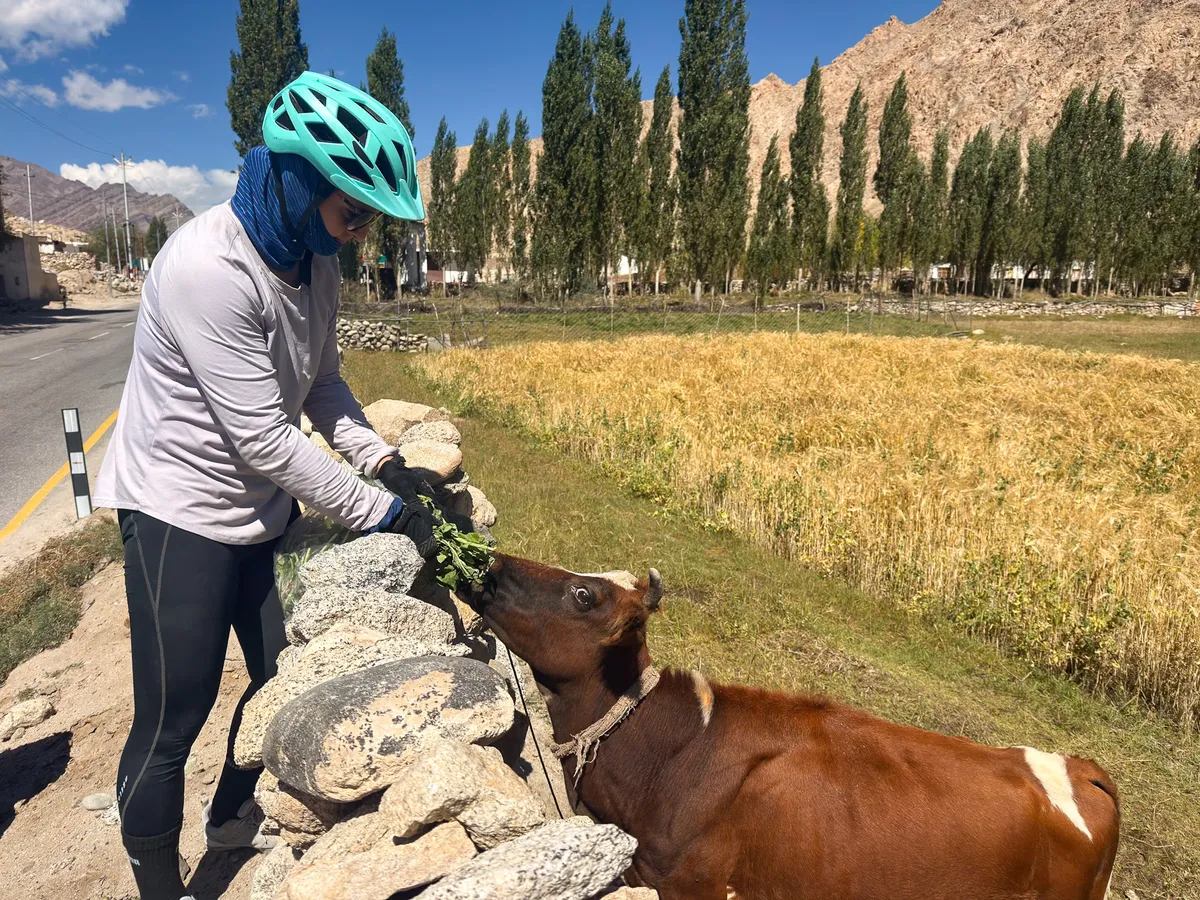
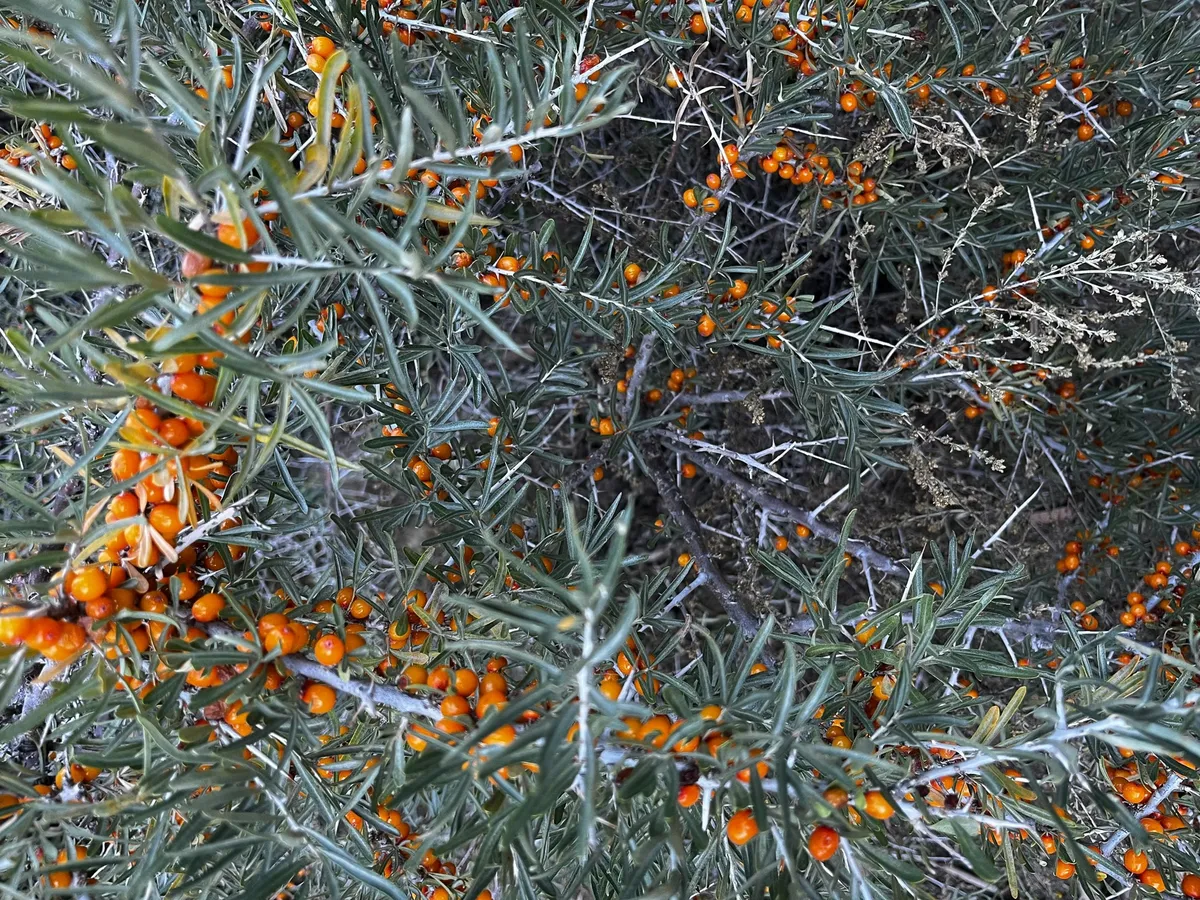
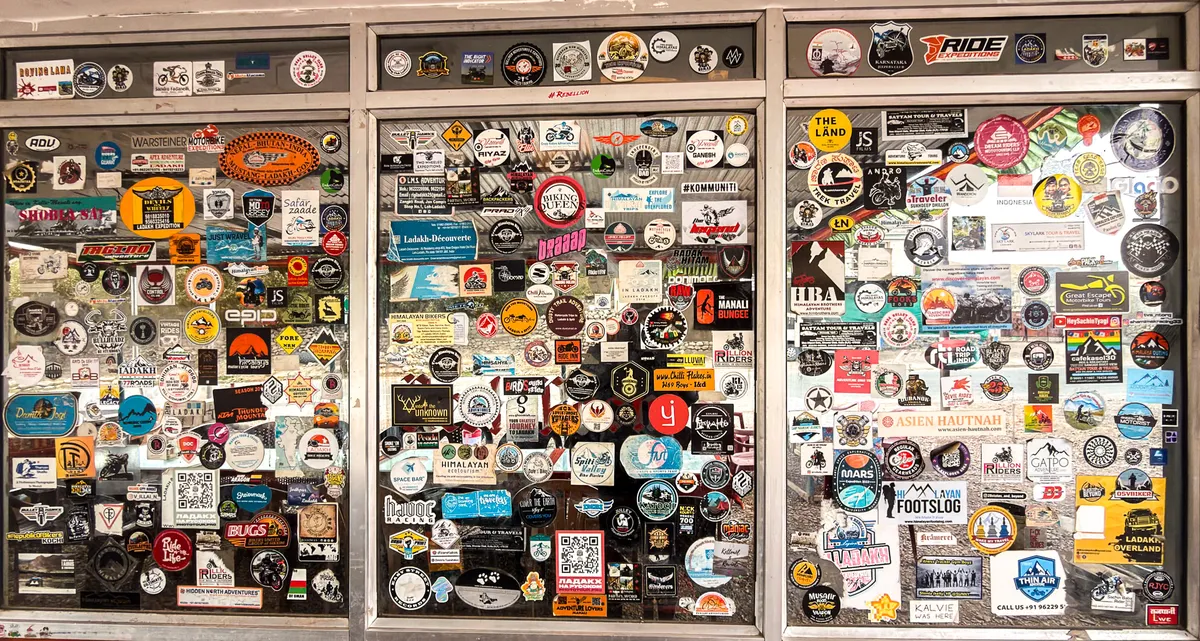
There was a single night in our tent. It was spent with cold feet and generally uncomfortable at 4,500 m.a.s.l., getting up to pee every few hours because of the Diamox and the persistent mental haze coming from rebooting my old and familiar wild camping fears—despite being camped next to a small trekking group! (We were camped beside the switchbacks of a pass and I don't like camping in sight of roads.) Most other nights were inside guesthouses that were also restaurants as well as family homes, so we sometimes watched cows getting forcibly milked and other times watched kids playing. Then once we were up on the plateau where settlements are seasonal, we stayed inside a trailer one night and a dhaba (truck stop restaurant) another night.
I appreciated when occasionally we could make a connection between what we saw and what it meant.
Like what was the deal with all the empty glass booze bottles along the road? I can't say for sure, but we did meet one group of six men and two women, mostly college students. Recently the guys had decided on a whim over drinks to drive from Delhi to Leh. There was some boozing while we chatted with them and I was taught Hindi at a speed that was endearing in its enthusiasm but was way too fast. So maybe Ladakh was where there's lots of guys trips and a general I'm on holiday mentality, which seems to come with booze.
And how about the thick white plastic boots, identical pairs, along the road, generally partially burned? This is the kind of thing that you can't Google. In Pang, a village, a woman named Dolma told us that B.R.O. issues some work gear and as many workers have come from faraway, like from Bihar, they're issued boots and then leave them at the work site at the end of the season. She referred to these Biharis as heroic, working in such harsh conditions so unlike their home, for little pay, in bad conditions, and sometimes in flip flops. From then on, I thought of the B.R.O. workers as heroic. I sometimes told them as much.
Dolma also shared about her hope and plans to help make shepherding cool again. The idea being that more young people in the Changthang region (traditionally home to nomadic shepherds of goats, sheep, and yaks) would feel like it was a viable vocation to consider. Importantly, viable not only means able to provide a materially comfortable life but also means that urbanite Ladakhi youth don't use the word "shepherd" as a condescending slur to throw at you.
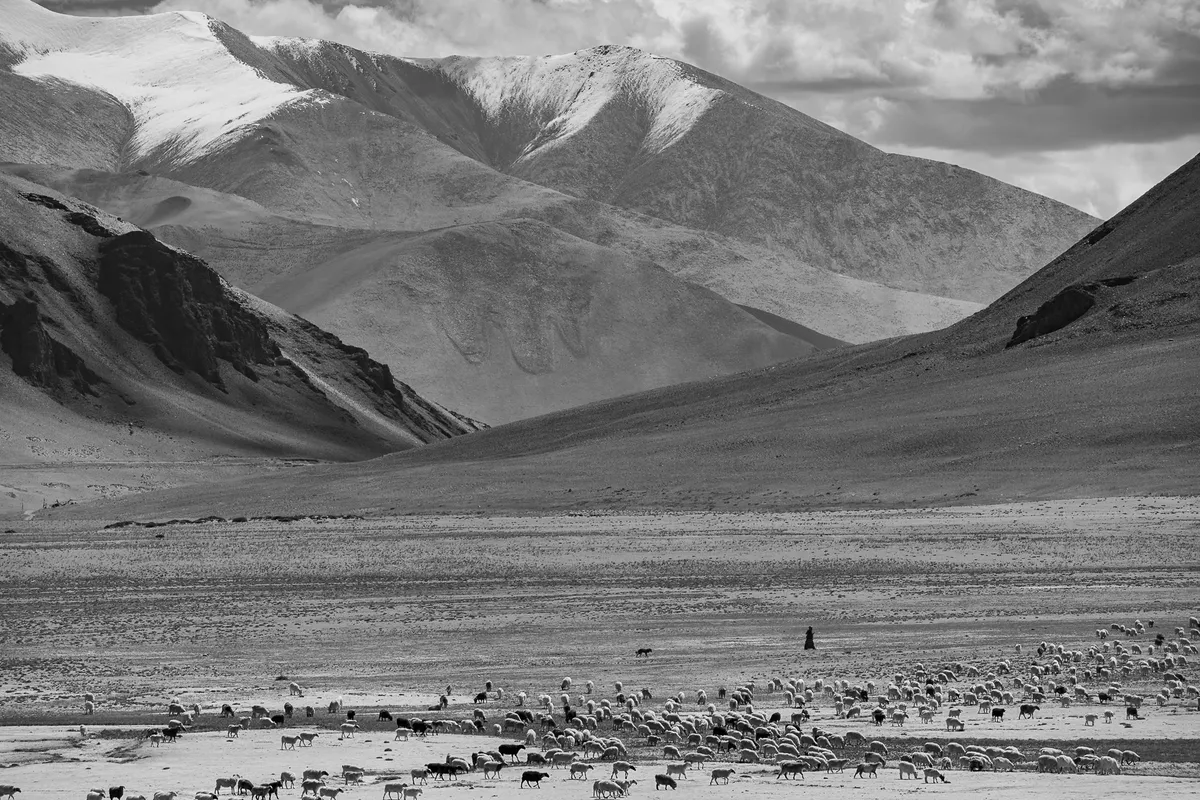
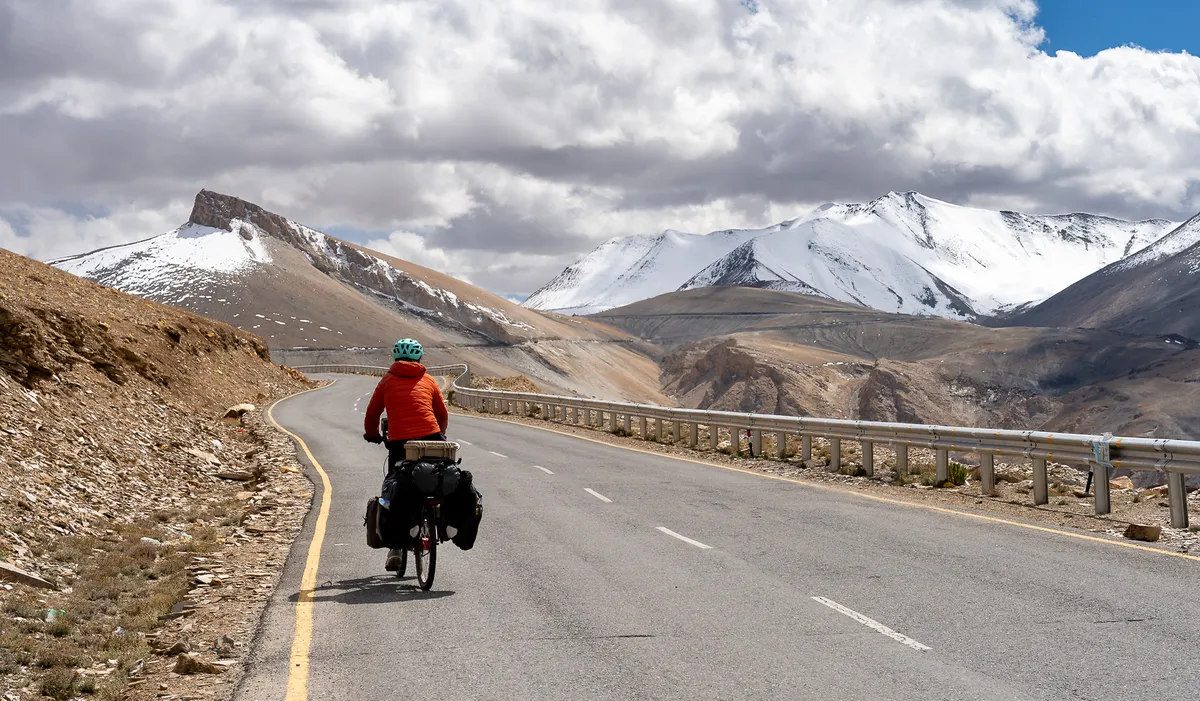
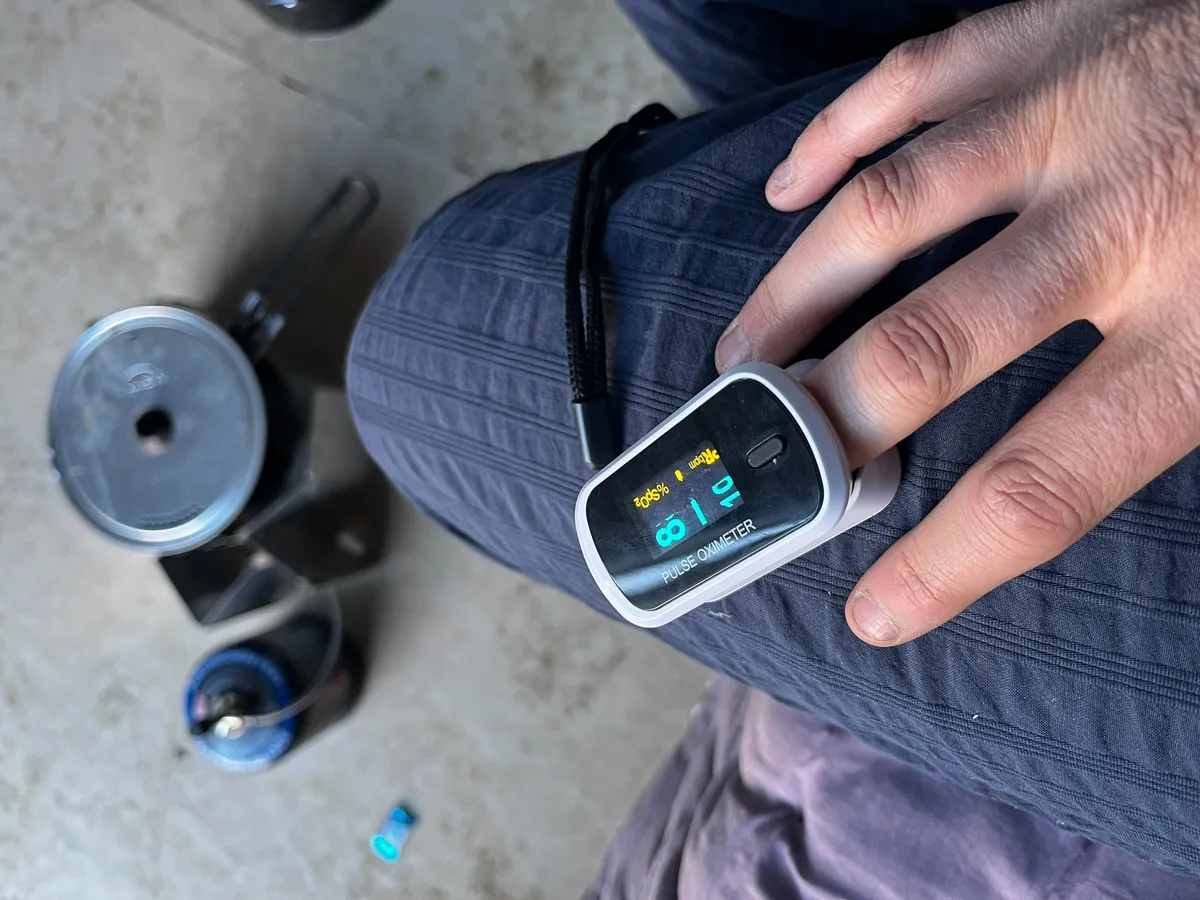
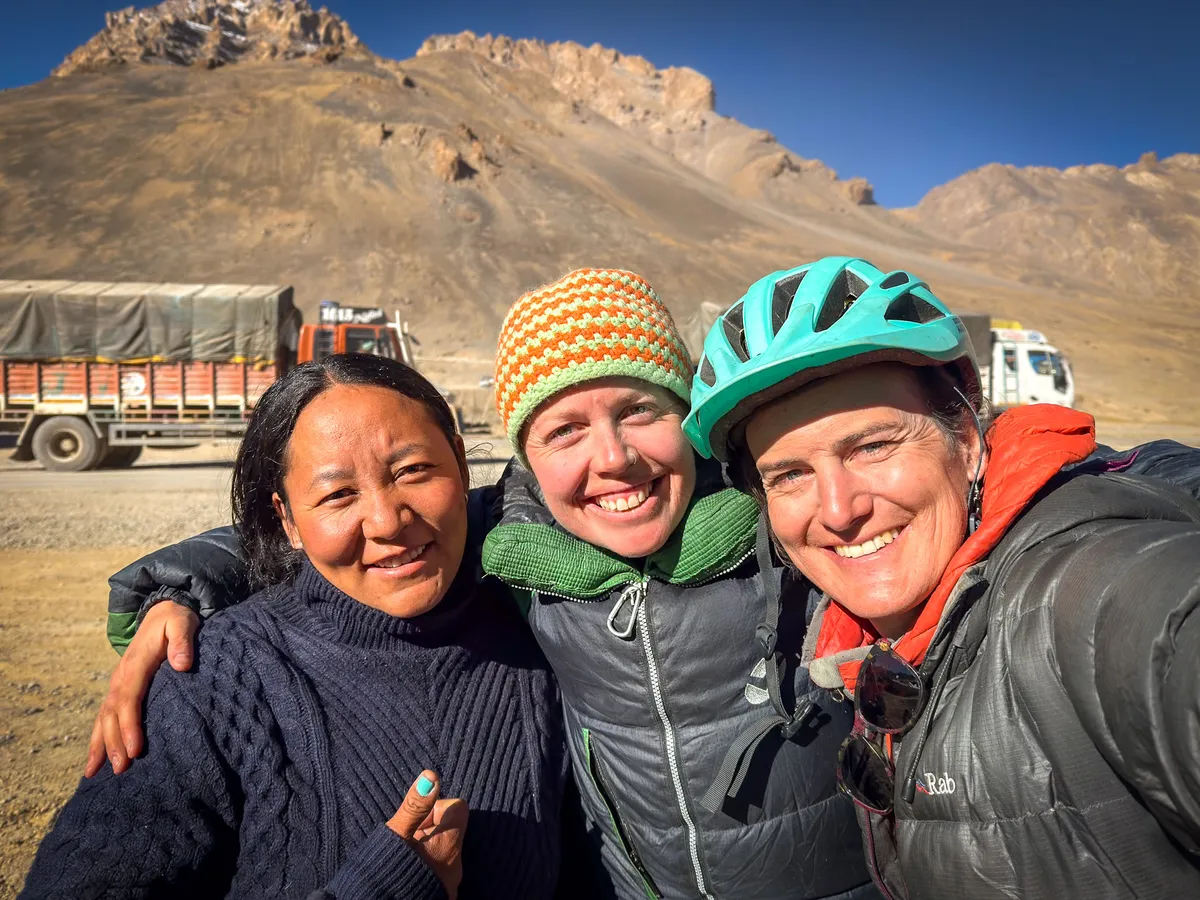
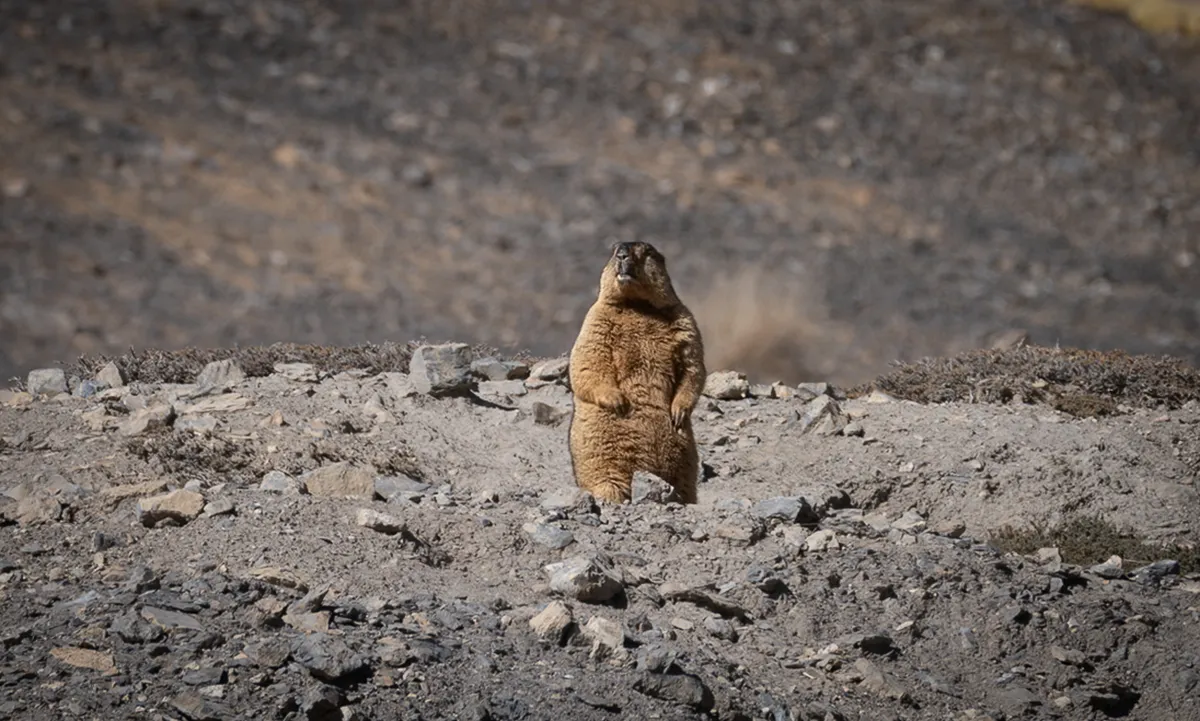
To quantify how slowly we were going, on the high passes we fell into a sustainable rhythm of climbing 100 vertical metres per hour. So that meant that 800 vertical metres of switchbacks took 8 hours. With days where the sun disappeared and it got cold not long after 6, this pace meant balancing breaks and exertion. Bell developed the microbreak strategy. Because it was inevitable for us to become breathless on anything that wasn't a very gentle incline, microbreaks were an amazing discovery that totally changed my emotional relationship to big climbs at altitude. This process is simple. You stop for a few big breaths after any short burst of exertion that's ten breaths or longer.
We ate carbs. Despite carrying a big heavy pantry pannier full of food, we didn't cook that often. We ate a lot of meals in dhabas and guesthouses. A lot of Maggi noodles, thali (literally "plate," a rounded meal of dahl, rice, roti, veg), allo paratha (flatbread stuffed with potato), sugared tea, and Nescafe.
Bell's health problems were up and down. Against a background of sunburnt lips, lack of appetite, congestion, their neck issue got worse until they were up half the night sitting in the dark in agony. This low led a new use for the panniers, whereby we used the big rack packs that sit on top of the back racks to immobilize Bell at night. This prevented her neck from getting triggered. This actually really helped and allowed the trip to continue.
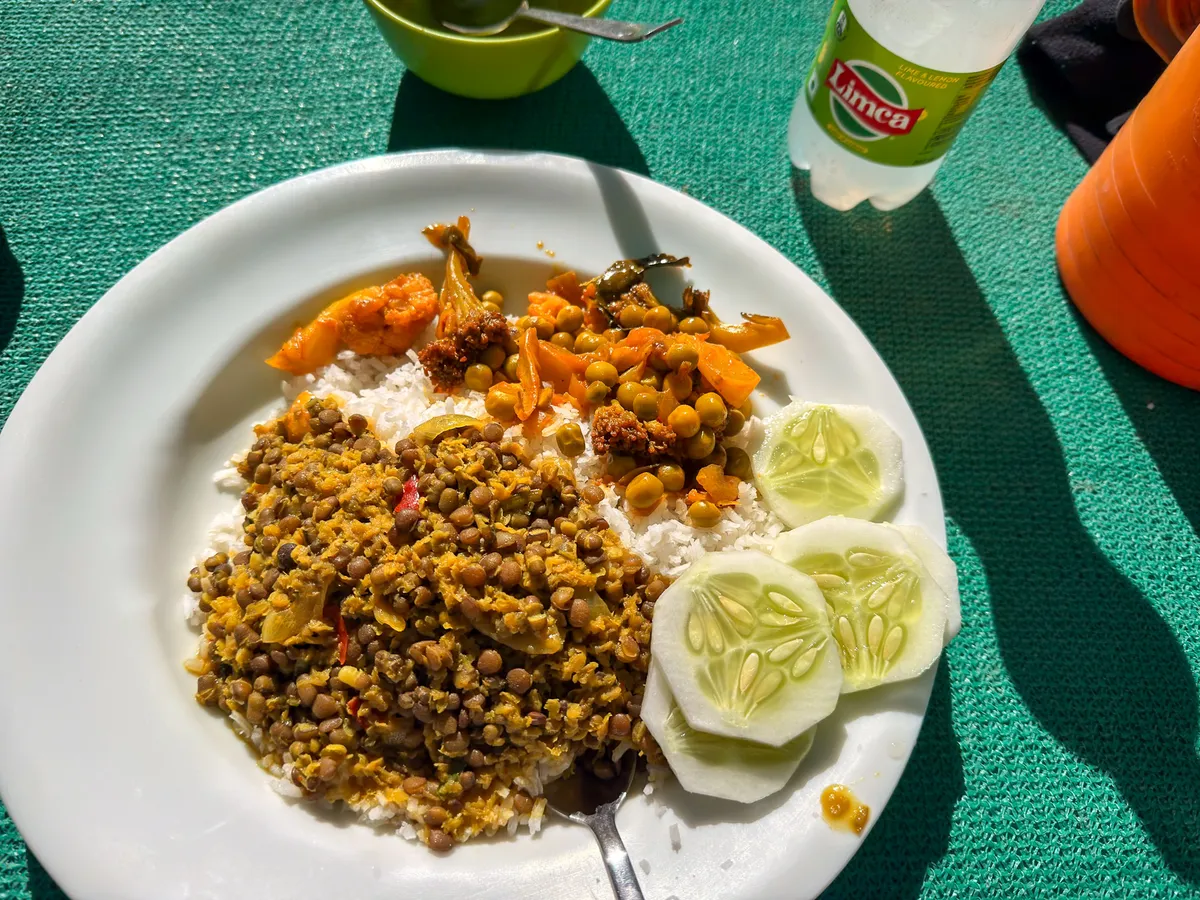
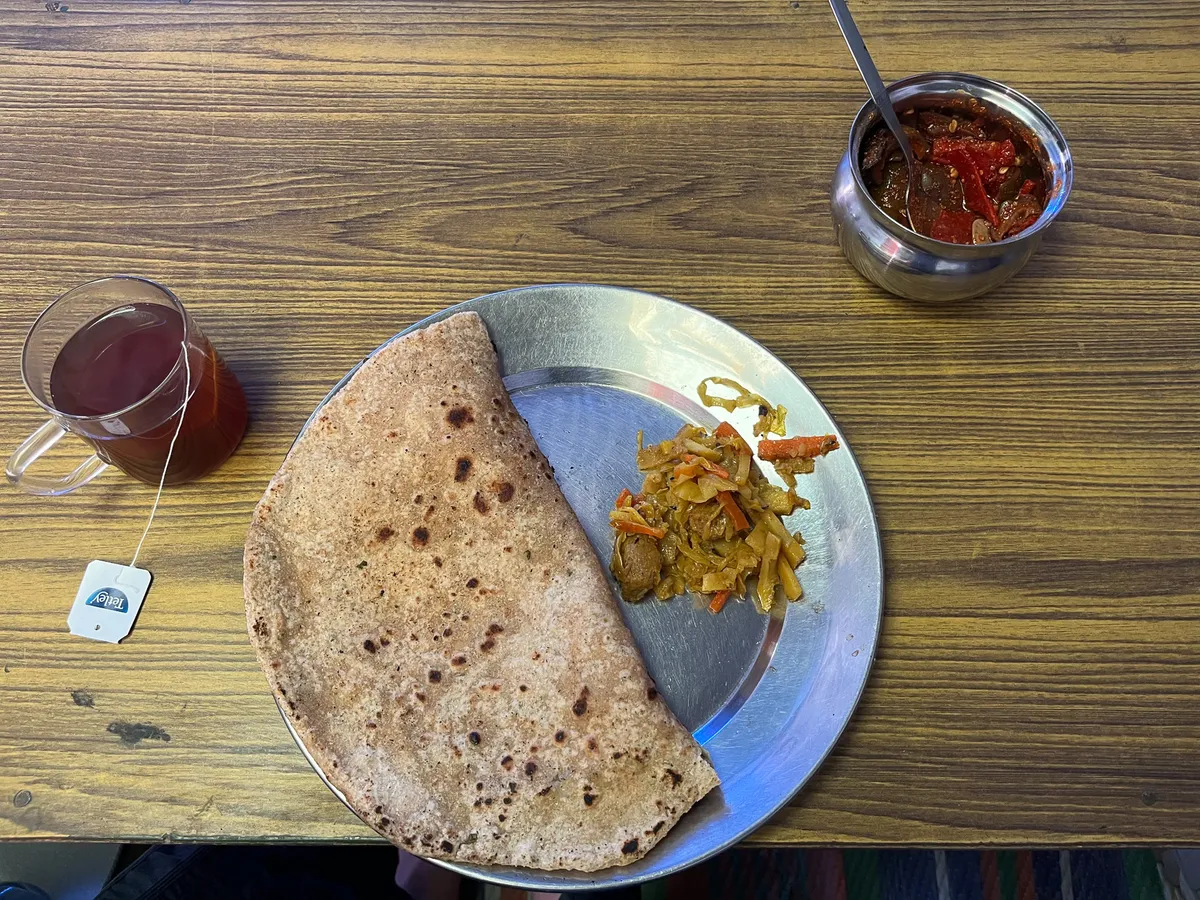
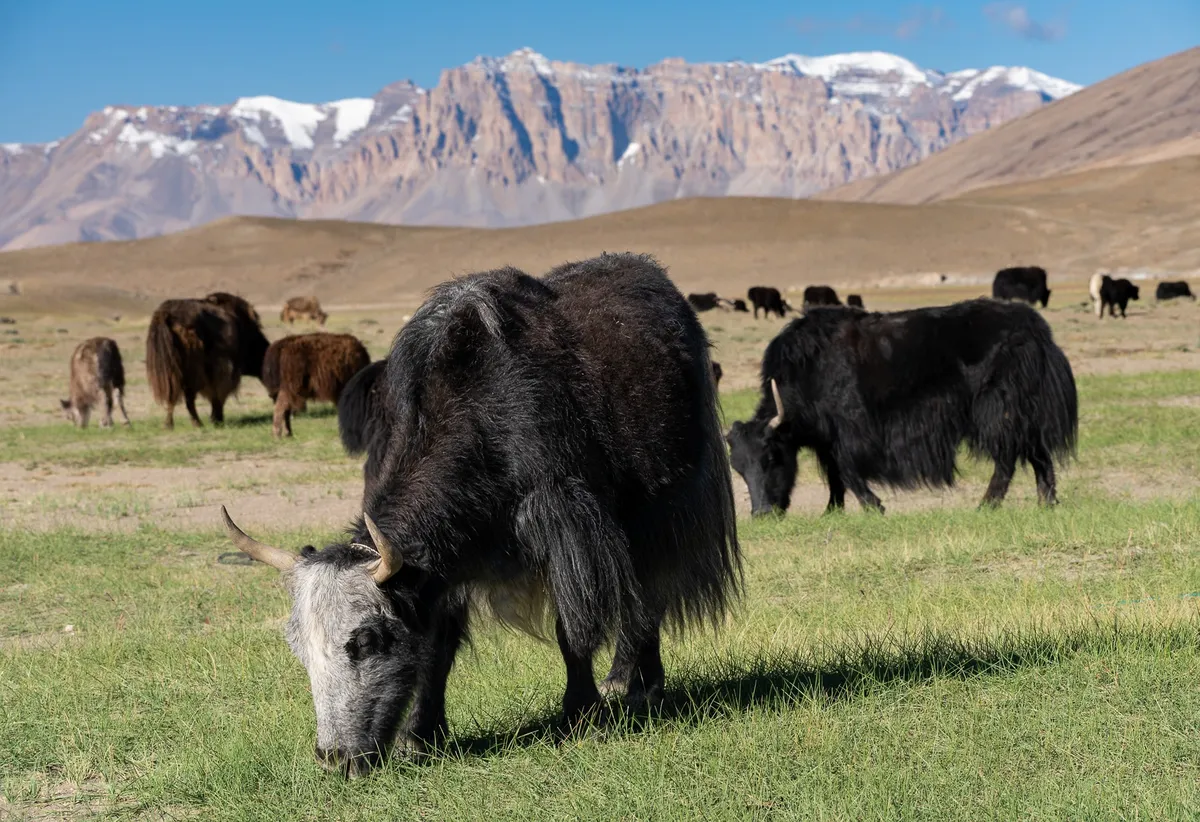
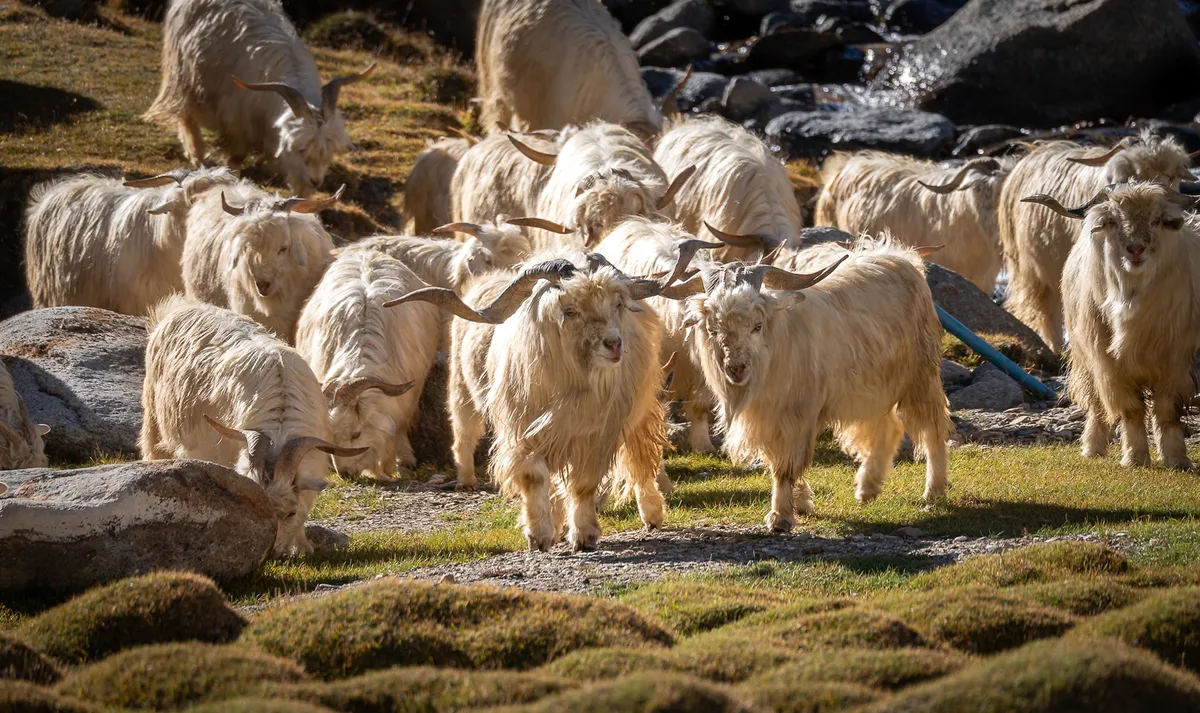
I don't think I learned that much about Ladakhi culture. I did meet both men and women named Sonam, saw that Ladakhi houses have flat roofs and was told that Buddhists are supposed to let the animals they keep as livestock (for pashmina, for example) live a natural lifespan. Apparently, dogs throughout Ladakhi are vaccinated for rabies. Throughout, Ladakhis were so nice and gracious and receptive about us stretching the use of the word julley to cover every interaction.
I didn't tell you yet! This is important and a nice way to wrap up. Bell cycled on this route 9 years ago. From Delhi to Leh via Manali, so including the Leh to Keylong ride we'd now completed in September, in spite of many obstacles.
In talking about Bell's original ride in the opposite direction, it struck me how much was new and different for them this time around, even in the same place. Have you heard that thing about how you can never go home, because you change and a place changes and so the home in your memory doesn't exist? For us there were jokes about about how we were in the land of Tibetan Buddhism and in keeping with that here Bell was doing reincarnation, really as a new person. (Bell visited previously as Evan, and with plenty of striving and rushing and "goal mind," which they have now mostly liberated themselves from.)
To have been visiting Ladakh, this incredible place, in any context would have been really cool. To visit it after years of Bell wanting to return with me and visit together, well. I will say that we have been trying to follow norms against public affection but that it was really darn hard to not hug each other and cry tears of relief and joy at the top of Tag Lang La Pass, the first we went over and the highest. From here, it seemed more possible that we'd be able to actually cycle. And after all the years of stories and the pictures of this road, and then over the last few weeks all the apprehension, here we were together.
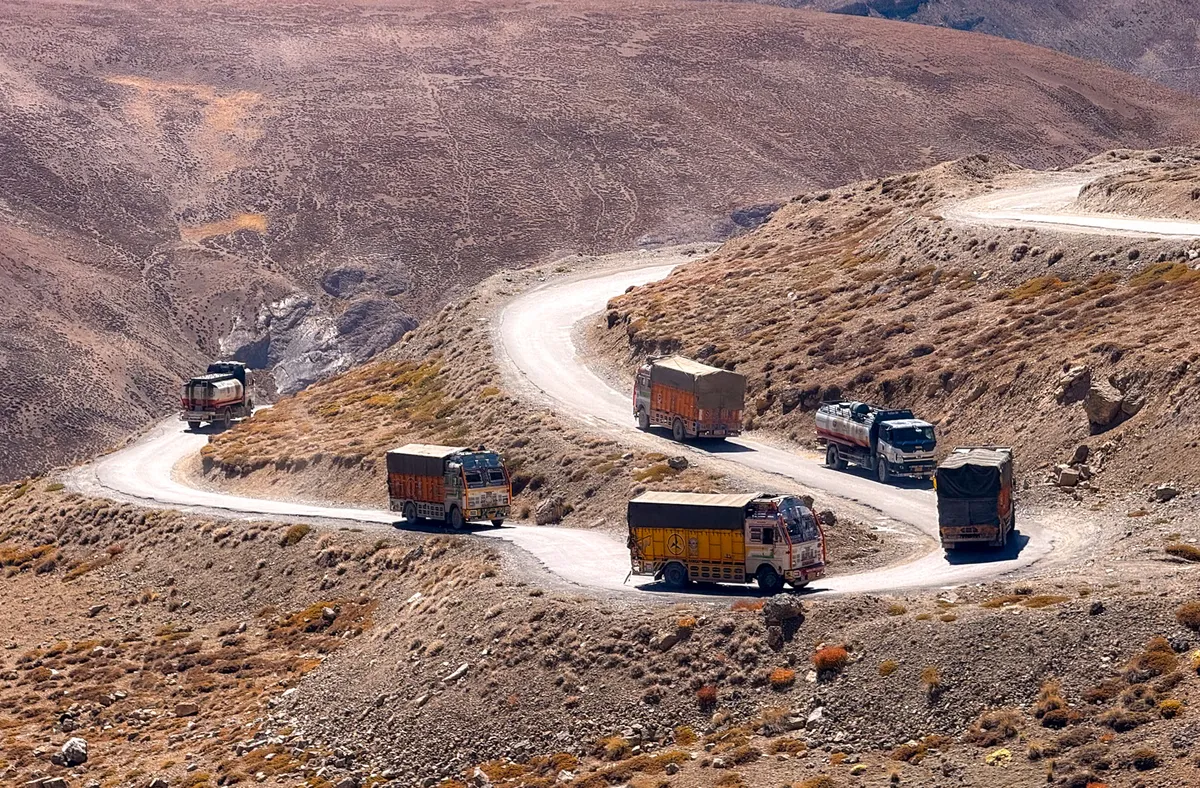
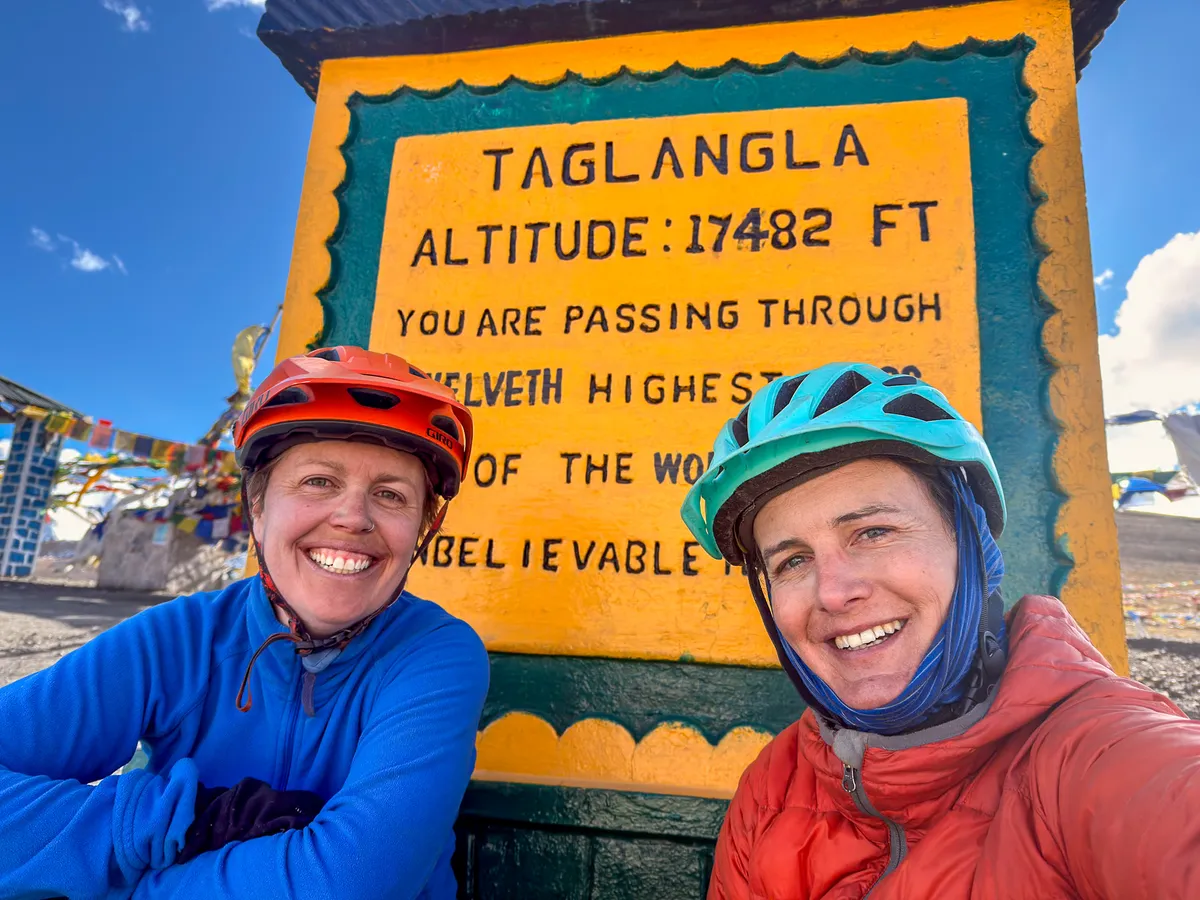
A few links I want to share from September
It's one thing to visit Ladakh, and entirely another to live in such a harsh, fragile environment. Living in Ladakh for an entire season: Understanding people & region is an interesting blog post that builds on the story I shared above from Dolma, by relaying bits and piece of conversations with Ladakhis about the forces at play in modern life, related to limited access to education, shepherding, and working with B.R.O.
Patriarchy, gender, and sexism in Buddhism with Tenzin Chogkyi: "And I said, Okay, if it's so great, you guys sit at the back of the bus Monday, Wednesday, and Friday, and we'll sit in the back of the bus Tuesday, Thursday, and Saturday."
Toska's photo page: Love this, beautiful pictures, but also it makes me think of an acquaintance who just posts a bunch of photos every month from the preceding month, with no captions. I find this somehow refreshing.
[Our shared reality with self-destruct in the next 12 months](tab: https://www.honest-broker.com/p/our-shared-reality-will-self-destruct) by Ted Gioia: "Most discussions of this issue focus on the technology. I believe that's a mistake. The real turmoil will take place in social cohesion and individual psychology. They will both fracture in a world where our shared benchmarks of truth and actuality disappear." via Curious About Everything
Bikepacking Zanskar: A journey through the valley of copper by Abhirup Bose shares his perspective on riding to and through Zanskar Valley by taking a very different route than we did.
Embarrassment is the price of entry by Tala: "Those willing to be embarrassed are the ones who go furthest. They are the ones who cross thresholds and shape meaningful lines. I will send that email, after all."
Men suck at maintaining friendships by Varun Raghu: "That's when I realized it's not too late. We can still reconnect. Across borders. Catch up on what's going on in each other's lives. All it takes is one text - "Hey, I came across xyzzy and thought of you...""
The state of the culture another one in this month by Ted Gioia but I found it very helpful: "The tech platforms aren't like the Medici in Florence, or those other rich patrons of the arts. They don't want to find the next Michelangelo or Mozart. They want to create a world of junkies -- because they will be the dealers."
Indigo: The story of India's 'blue gold' For the last year I've been learning about Indigo and I was interested to learn that Indian production methods different quite a bit from those used in West African countries. In this article it goes deep into how Indigo is grown and used today, but also shares the colonial history of this beautiful plant and dye.
Last but certainly not least, I'm sharing two articles from Laura Killingbeck. They took my breath away, in their lucid, earnest, and compassionate articulations of patriarchy and how it affects all of us. So fantastic and so needed: A woman who left society to live with bears weighs in on "man or bear" and "Empathy is a survival skill."
P.S. Most of Ladakh has very little light pollution, and the night skies were absolutely incredible. The photo at the very top of the post is from one of those nights.